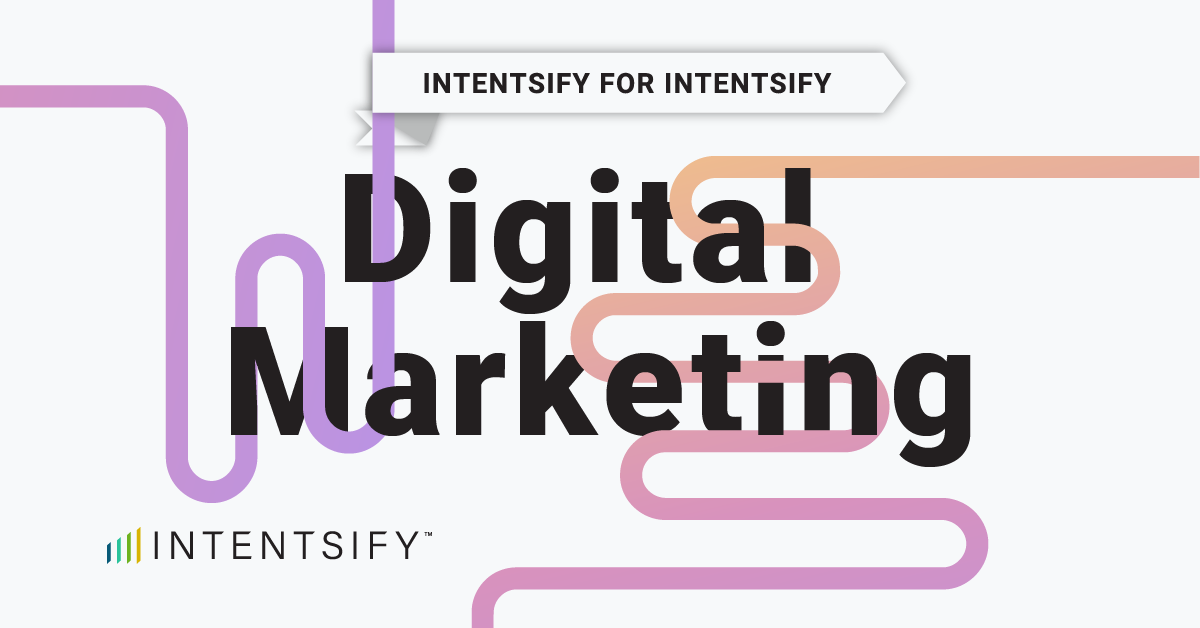A version of this article was originally published on CMSWire.
Account-based marketing (ABM) has been a priority among B2B companies for years now. More recently, intent data has become a popular tool for supporting ABM programs—and with good reason. Marketing and sales teams use intent data to prioritize target accounts based on actual data showing which accounts are researching their products and services.
Prioritizing accounts in this way is far more effective than simply basing account selection on a sales wish-list. From these insights come the precision, efficiency, and effectiveness ABM strategies promise to provide. (For the purposes of this article, “intent data” is used to refer to third-party intent data.)
Unfortunately, most marketing, sales, and even customer success teams aren’t using intent data to its fullest extent. Intent data for marketers typically means account-targeted display ads. For sales teams, intent data usually conjures simple images of lead prioritization. These use cases are important, but they represent only a fraction of the value intent data can provide B2B businesses.
Here are five lesser-known intent data use cases that will squeeze more return from your intent data investment.
1. Plan Events that Drive a Higher Turnout of Priority Prospects
Intent data can help your demand generation and field marketing teams identify and plan events in locations comprising large groupings of prospective accounts showing interest in your products and/or services. Pinpointing the right locations will result in higher attendance rates and more meaning conversations at the events. This can have a huge impact on your ABM program ROI, as B2B marketing teams allocate more budget to in-person events than any other investment (according to Forrester).
Moreover, certain types of intent data (they’re not all the same) will identify the specific topics target accounts are actively researching. With this info, marketing teams can further boost turnout by customizing emails and ads based on prospects’ topics of interest. This leads us to the next under-recognized use case….
2. Increase the Impact of Your Content Marketing Efforts
It seems obvious, but many intent data subscribers don’t use it to optimize their content efforts. One of ABM’s primary concepts is customizing engagements to the specific needs of target accounts. This is often done through website personalization software, but that requires decision-makers among target accounts to first visit your website. What about the content efforts that accommodate prospects’ initial research activity?
The right intent data can tell you the product and service categories target accounts are actively researching, as well as if they’re researching competitors’ offerings. This then allows you to tailor content to target accounts at any stage of the sales funnel. From top-funnel content syndication assets to mid-funnel nurture emails to bottom-funnel sales-enablement material, intent data can guide your content creation to ensure the best possible engagement outcomes.
3. Generate More Leads from Your Target Accounts
Serving ads to target accounts is valuable, especially from a branding perspective. Intent data obviously helps in this regard. However, such account-based programmatic ad campaigns rarely result in the volume of hand-raises (i.e., inquiries, leads, contact info, etc.) needed to hit sales pipeline goals. For this reason, it’s smart to leverage intent data to drive your lead gen campaigns as well.
Many lead gen vendors, publishers and media partners allow marketers to target specific accounts on a cost-per-lead (CPL) basis. This ensures you’re not wasting media budget on leads outside your ABM program’s targeting parameters. Combined with intent data that highlights which accounts are actively researching your products or services, you gain a powerful, efficient lead-gen mechanism for your ABM program.
4. Get More from Your Channel Strategy
ABM strategies often depend on the successful execution of channel-marketing programs, which are often complex and cumbersome to implement. Intent data can help streamline these efforts. By identifying the right accounts to focus on as well as their respective interests (as understood via their research activity), intent data helps you and your partners develop easily followed processes (such as a regular outreach cadence and personalized talk tracks) based on clear program objectives. Consequently, partners are better equipped and more incentivized to promote your products.
Intent data further allows your team to prioritize account-based leads generated by partners. This, in turn, increases conversion rates, pipeline value and, ultimately, channel-generated revenue. Benefitting from greater return on their efforts, partners will increasingly focus on marketing your products, leading to an increasingly successful account-based channel program.
5. Prevent Customer Churn and Support Account Expansion
This is perhaps the most underutilized intent data use case. A major focus of most ABM programs is expanding investments among current accounts. By monitoring the research activity of current accounts, intent data helps customer marketing, sales, and customer success teams identify which customers are most likely to churn, as well as those ripe for cross-sell.
For example, being informed when one of your current customers is actively researching a competitor’s offering is incredibly valuable. It lets your team address existing customer issues before it’s too late. On the other hand, if the data shows certain customers researching solutions you offer (but they haven’t yet bought), you can reallocate resources to expand the account’s investment and increase its lifetime value.
Intent Data’s Value Is Greater than the Sum of its Use Cases
Intent data’s most important value is its ability to enhance nearly all ABM efforts—from top-of-funnel branding efforts to post-sell customer success initiatives. If you’re thinking about investing in intent data to support your ABM strategy, make sure you consider its value to the entire buy cycle.
It’s like compound interest. Using intent data to Increase conversion rates by just a few percentage points at each stage of the funnel (and beyond) ultimately results in huge gains for the business—all for the same investment in time and resources.






